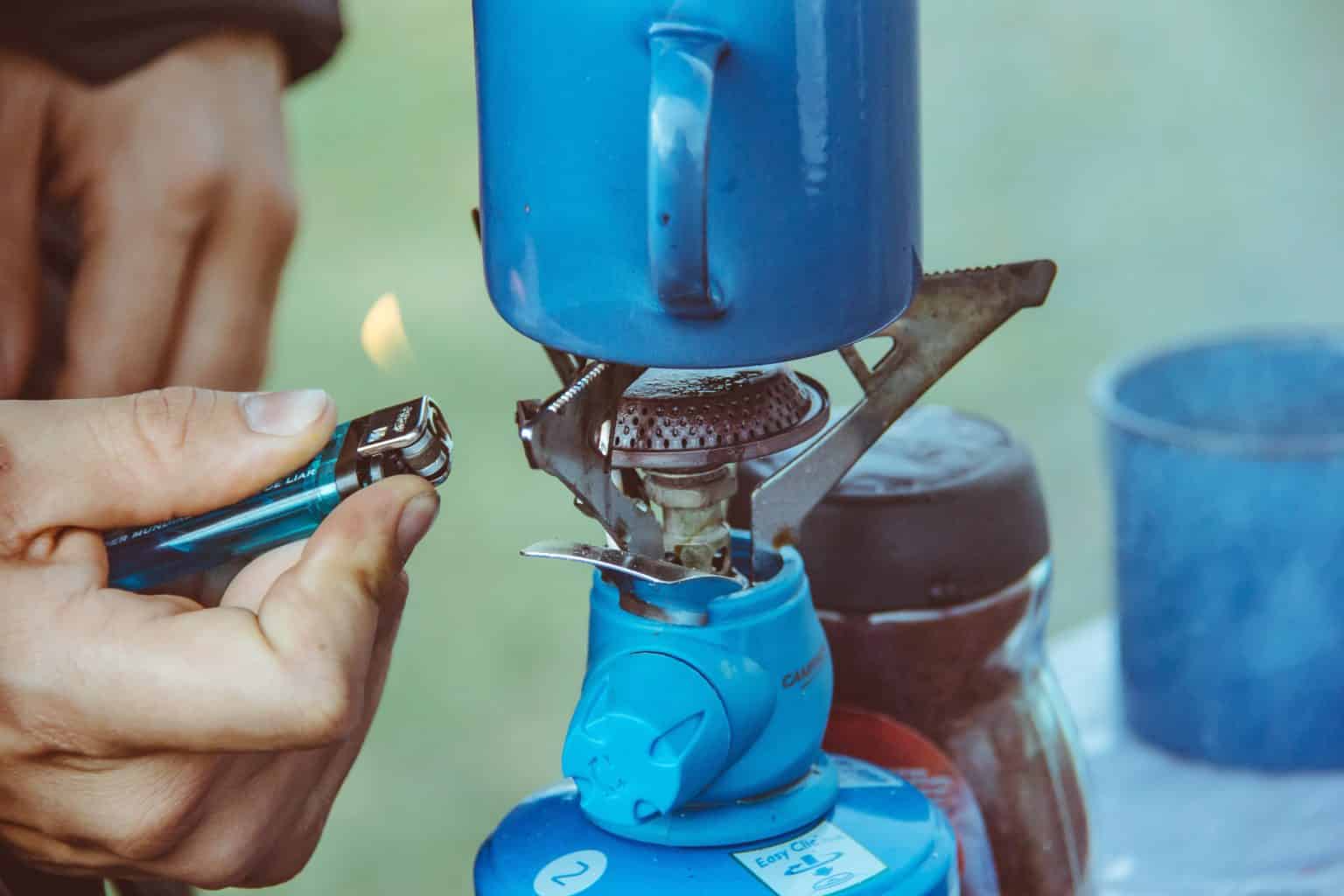
Symptoms Of A Bad Evaporative Emission Canister?
The Evaporative Emission Canister Control System, often known as EVAP or charcoal, regulates the gas fumes and prevents vapor leaks from the fuel system.
This technology has a big influence on gasoline emissions reduction since it allows gasoline to evaporate even when the engine isn’t operational.
What happens when an EVAP canister fails?
The following symptoms are typical: the engine warning light coming on, a hissing sound when opening the petrol tank, a gasoline odor inside the cabin, difficulties with filling up the tank, and much smoke coming out of the exhaust pipe.
How Does The EVAP System Function?

The evaporative emission canister system does not form part of the fuel system; instead, it has an essential function in ensuring that the engine is kept supplied with fuel while at the same time preventing vapor from escaping from the system.
Gasoline has an inherent vapor level in the tank.
Due to gasoline’s property, vapors are generally present inside the tank.
A vent line directs them into the EVAP canister, where they are absorbed by active charcoal to allow them to move on from the tank.
The purge flow sensor opens when enough vapors have been gathered to allow the vapors to enter the throttle body and be used as fuel.
The vent solenoid will now open to allow air into the EVAP container and equalize the pressure.
Symptoms Of Failing EVAP Canisters

1. Hissing Sound
When you open your EV’s fuel tank to fill it up, you might notice a slight hissing sound.
This usually happens when you have driven for lengthy periods of time and the EVAP canister was unable to balance the pressure fast enough.
If the noise is loud and you even feel a wind blowing through, the EVAP system is not removing enough vapors.
2. Smell Of Gasoline
It is never a good sign to smell gasoline near your automobile.
The highly flammable liquid evaporates quickly and can ignite almost immediately, so you will need to inspect your entire fuel system to find the source of the odor.
If the gasoline odor is not due to physical damage to one of the components, it might be caused by a faulty EVAP container or pump.
3. Check Engine Light
It is typical for drivers to ignore the check engine light, especially if they are driving an older vehicle.
While it is true that some warnings may be disregarded, the check engine light will not provide you with a precise warning if a new problem develops.
I would suggest buying a cheap diagnostic tool or taking your automobile in for a check-up every few months to ensure that it is in good working order.
My present vehicle generates several unimportant warnings that I can not permanently fix, so running the examination more frequently allows me to discover the more serious problems before they become a problem.
4. Smoke Coming From The Exhaust
The days of smoking exhaust pipes are long gone, with just old 2-stroke and carburetor engines releasing white vapors from the back.
When a contemporary direct-injection engine starts generating visible white smoke, there is probably an issue with the air-fuel mixture.
This isn’t typically caused by the EVAP system, but it is worth double-checking the condition of the canister to remove it from the list.
5. Problems With Refueling
The gas station nozzle squirts a big amount of petrol fast to make the refueling process go more smoothly.
When you pour liquid into a bottle using a funnel, you must always raise the funnel slightly to allow the trapped air inside the bottle to escape and make things go more quickly.
The EVAP canister has to draw all of the gas out of the tank in order for it to be filled with petrol, owing to the fact that the nozzle creates a good seal on the fuel tank.
If it is clogged, vapors will be unable to escape, and your refueling will be halted by the safety mechanism inside the nozzle.
If you are having trouble with your car’s gas tank, do not attempt to force more fuel into it; instead, use what you have got to reach a mechanic.
How To Replace EVAP Canister
At-home replacement of the EVAP container is not difficult, but there is one thing to keep in mind.
When you are working with gasoline vapors, one spark, one metal-on-metal contact, and a pressure difference can be enough to cause an explosion.
The probability of this happening is low, but I want to make sure you approach the work carefully and with care.
Tools You Will Need:
- 4V Electric Cordless Screwdriver Kit, LED Work Light, USB Lithium-ion Battery Rechargeable, 32 Screwdriver pieces Bits, Flex Hex Shaft, 8 Sockets, Bit Holders, and Populo Power Screwdriver, Storage box,
- Master Combination Wrench Set with Roll-up Pouch | SAE 1/4” to 1”, Metric
- GM Genuine Parts 215-464 Vapor Canister
- Pro-LifT F-2315PE Grey Hydraulic Trolley Jack Car Lift
- Pro-LifT T-6903D Double Pin Jack Stand – 3 Ton
The average cost of labor to replace the EVAP container is $100, so it’s a good idea to invest in your own tools.
Almost everything on the list is a must-have tool that will be useful when you’re repairing anything on your car or house.
Steps To Replace The EVAP Canister:
- To gain access to the EVAP canister, raise the rear of the car on jack stands.
- Locate the EVAP canister, which is disc-shaped and resembles an exhaust muffler.
- Remove the bolts that secure the canister in place.
- Disconnect the wires from the terminals before removing the canister.
- Remove the canister from its protective casing and compare it to the one you purchased.
- If your replacement evaporator came without the canister, use the one from the old unit.
- Place the new canister back in its protective casing.
- Attach the wires beneath the car and reattach the casing.
Take a look at this great guide on how to remove and replace an EVAP canister.
Frequently Asked Questions
How much does it cost to change a vapor canister?
Labor costs range from $100 to $200, while the overall expenditure is determined by the cost of the EVAP container.
A vapor canister costing $100 is used in most cars, for a total cost of $200-$250.
Is it possible to operate a vehicle if the EVAP canister is broken?
You will not be prevented from driving your car if your EVAP gas canister is faulty.
However, the odor of gasoline, as well as failing emission standards, are enough to justify having the canister replaced.
Is it possible to clean an EVAP canister?
Active charcoal is actually cleaned using compressed air, although never with liquid!
The ability to clean the EVAP container is debatable, so if you are going to take the effort to remove it, you should also change it.
Do you require a vapor canister?
Because the vapor canister and the whole EVAP system are required to prevent excessive pollutants, you should never try to remove or bypass them.
It is against the law to tamper with your car’s EVAP system, which not only affects your vehicle’s ability to pass emissions tests, but it also causes it to fail.
What are some of the signs of a faulty purge valve?
The purge valve’s failure will not resemble that of the EVAP canister.
You may experience problems starting the engine, such as difficulty cranking it, a rough idle, and poor performance and fuel efficiency.
The check engine light should come on to indicate there is a problem with the purge valve.
Summary
Now that you know what signs indicate that your EVAP canister is malfunctioning, you can go out and get the equipment you’ll need to replace it.
You’ll not only save money on a mechanic’s bill, but you’ll also learn a new ability while doing so!
